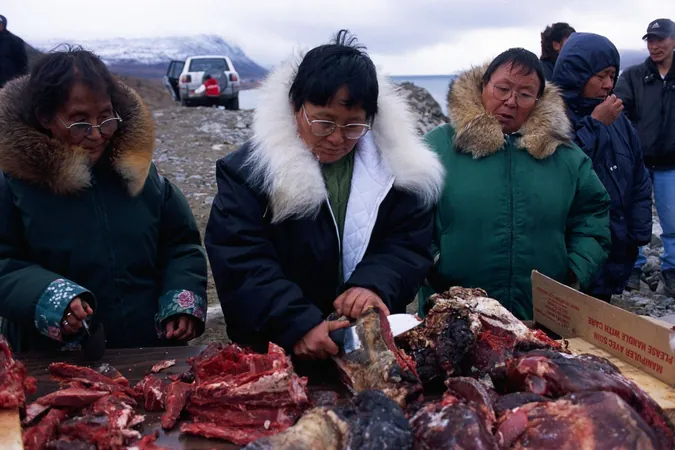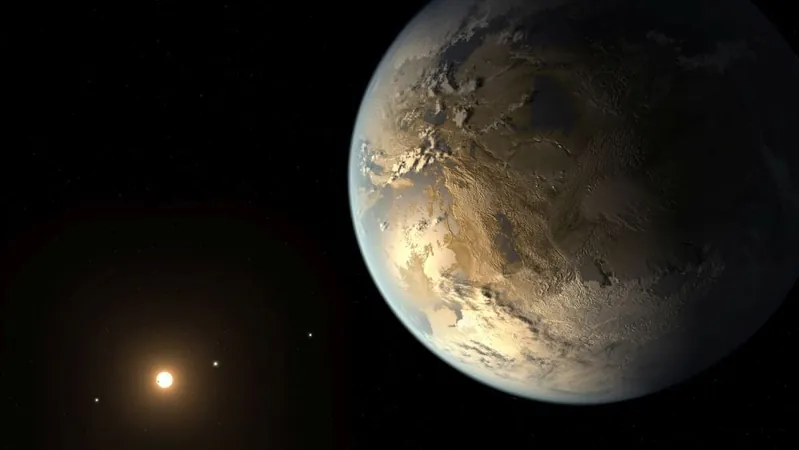
Unlocking the Secret to Human Hypercarnivory: Which Groups Came Close to a Meat-Only Diet?
2025-09-13
Author: Liam
The Fascination with Hypercarnivores
When we think of hypercarnivores, images of fierce predators like lions and wolves often come to mind. These animals get over 70% of their calories from meat, solidifying their place in the food chain as apex hunters. But what about humans? While we typically classify ourselves as omnivores, some unique groups have pushed the boundaries of traditional diets, surviving—and thriving—on diets that lean heavily towards meat.
What Defines a Hypercarnivore?
A hypercarnivore is an animal whose caloric intake comes overwhelmingly from meat—more than 70% to be precise. Most modern humans consume a significant amount of carbohydrates from grains, fruits, and vegetables. However, in harsh environments or under unique cultural circumstances, certain communities have adapted to diets that are primarily made up of animal products.
1. The Inuit: Masters of Arctic Survival
The Inuit people from the Arctic are perhaps the most well-known example of human hypercarnivory. In an environment where plant life is nearly non-existent, their traditional diets have historically consisted of astonishingly high percentages of animal products, often reaching up to 95%! Their diet includes: - Seal and walrus meat and blubber - Caribou - Arctic char - Whale - Occasionally, eggs or seabirds With limited plant life, the Inuit have developed unique metabolic adaptations, allowing them to thrive on diets rich in fat and protein—often boasting low rates of chronic diseases until the advent of modern dietary influences.
2. The Maasai: Blood, Milk, and Meat
In the vast plains of East Africa, the Maasai thrive on a pastoral lifestyle centered around their cattle. While they aren't strictly hypercarnivorous, their traditional diets, comprising: - Cow's milk - Cow's blood - Beef (consumed less frequently) have some of the highest animal product consumption globally. Seasonal variations and wealth can affect their intake, yet it's common for Maasai warriors to go for long stretches without consuming any plant-based foods, relying instead on the surprisingly complete nutritional profile of fresh milk and blood.
3. Mongolian Nomads: The Empire on a Plate
During the Mongol Empire, nomadic tribes in Central Asia lived off heavily animal-based diets, consisting of: - Mutton and goat - Fermented mare's milk (airag) - Various dairy products like cheese and yogurt - Blood-based broths In these steppes, cultivated plants were scarce, leading many Mongols to rely on animal products for sustenance, especially during military campaigns or the harsh winters.
4. Plains Indigenous Tribes: Bison as a Food Hub
In North America, tribes like the Lakota, Comanche, and Blackfoot heavily relied on bison. During peak hunting seasons, these tribes derived most of their nutrition from: - Bison meat and fat - Organ meats - Bone marrow - Preserved meats such as pemmican While they also foraged for berries and roots, bison provided a calorie-dense food source, particularly when preservation techniques were mastered.
5. Ice Age Human Cultures: Ancient Carnivores
Looking back in time, scientists suggest that Ice Age humans in Europe may have been largely carnivorous. Fossil analysis reveals that they depended on large herbivores like: - Mammoths - Reindeer - Woolly rhinoceroses - Red deer Limited seasonal edible plants pushed these ancient humans towards hypercarnivory, allowing them to thrive in meat-rich environments.
The Verdict: Are Humans Natural Hypercarnivores?
In conclusion, while humans are primarily adaptable omnivores, certain groups have come close to a hypercarnivorous diet under specific environmental pressures. However, attempting to adopt a strict meat-only diet today is not without caveats and risks associated with nutrient deficiencies. These remarkable examples serve as a reminder of our species' exceptional adaptability throughout history. It highlights not only our dietary resilience but also the context-specific strategies we've developed to survive. So while our ancestors danced around hypercarnivory, most modern humans find balance in a diverse diet, merging history with our evolving relationship with food.









 Brasil (PT)
Brasil (PT)
 Canada (EN)
Canada (EN)
 Chile (ES)
Chile (ES)
 Česko (CS)
Česko (CS)
 대한민국 (KO)
대한민국 (KO)
 España (ES)
España (ES)
 France (FR)
France (FR)
 Hong Kong (EN)
Hong Kong (EN)
 Italia (IT)
Italia (IT)
 日本 (JA)
日本 (JA)
 Magyarország (HU)
Magyarország (HU)
 Norge (NO)
Norge (NO)
 Polska (PL)
Polska (PL)
 Schweiz (DE)
Schweiz (DE)
 Singapore (EN)
Singapore (EN)
 Sverige (SV)
Sverige (SV)
 Suomi (FI)
Suomi (FI)
 Türkiye (TR)
Türkiye (TR)
 الإمارات العربية المتحدة (AR)
الإمارات العربية المتحدة (AR)